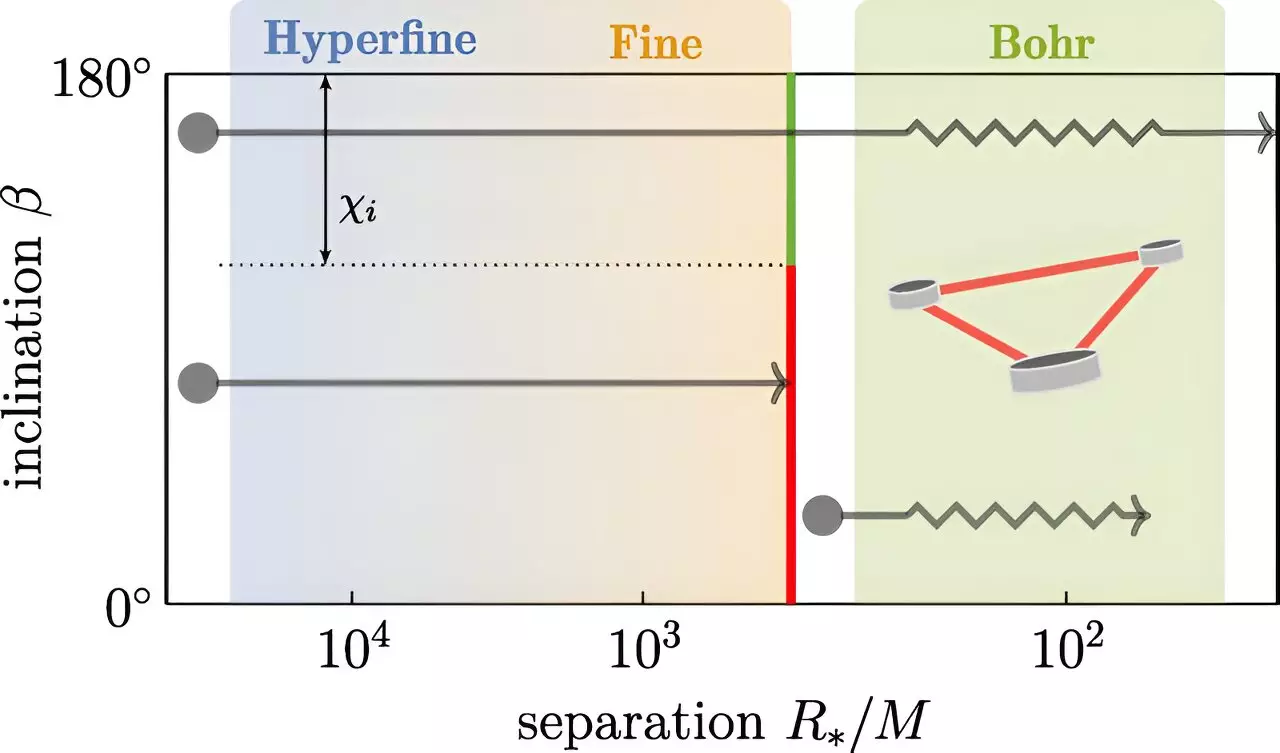The study of gravitational waves has revolutionized our understanding of the universe, opening a new window into the phenomena of black holes and the elusive particles that may reside in the cosmos. Recently, a research team from the University of Amsterdam (UvA) and the Niels Bohr Institute in Copenhagen published a compelling paper in *Physical Review Letters*, theorizing that close monitoring of merging black hole pairs could potentially unveil evidence of new particles previously unobserved in the realm of particle physics. This article examines the key advancements in understanding gravitational waves emitted during black hole mergers, detailing their implications for detecting new ultralight bosons and enriching our comprehension of fundamental physics.
The mergers of black hole pairs are increasingly recognized as key events in the gravitational wave era. As these massive remnants of stellar evolution spiral into each other, they emit gravitational waves that encode intricate information about the properties of the black holes and their surrounding environments. For more than six years, researchers at UvA have meticulously studied these phenomena and their implications for theoretical physics. Led by physicists Giovanni Maria Tomaselli and Gianfranco Bertone, supported by former UvA student Thomas Spieksma, this research hypotheses that gravitational waves can reveal details about the orbits of binary black hole systems that may hint at nanoparticle candidates like ultralight bosons.
At the heart of the new study lies the concept of black hole superradiance, which describes a unique process whereby rotating black holes can shed mass into a surrounding particle cloud. This particle cloud creates a stable system akin to a miniature atom, drawing parallels to electronic orbits. When conditions are conducive, the black hole transfers its energy to lighter particles, allowing researchers to hypothesize about the existence of these ultralight bosons—hypothetical particles that could significantly alter our understanding of cosmology and astrophysics.
One of the remarkable insights from the researchers is the notion of “resonant transitions.” Just as electrons transition between energy states within an atom, the particle cloud surrounding a rapidly spinning black hole can shift states, impacting the gravitational wave signature emitted during a merger. Another notable discovery involves “ionization,” where portions of the particle cloud may be expelled, each of these phenomena yielding telltale signatures in the gravitational waves.
The team’s analysis considers two primary scenarios that may result from the dynamic interaction between merging black holes and ultralight boson clouds. If the black holes and the particle cloud rotate in opposite directions, the particle cloud remains intact, offering a unique opportunity to detect ionization effects that impact gravitational waves. In contrast, if the alignments differ, the particle cloud could become destabilized, leading to more predictable patterns in the orbital characteristics of the binary system.
These possible outcomes have vast implications for the search for new particles. Detection strategies arising from this research could lead to the identification of two distinct phenomena: one focusing on the ionization patterns in the gravitational wave signal, and the other on the concentrated presence of systems exhibiting specific values of orbital eccentricity and inclination.
The significance of this research cannot be understated; as gravitational wave detectors become increasingly sophisticated, the ability to capture and analyze the signals emitted from merging black hole pairs will only grow. The upcoming observational campaigns stand poised to validate the study’s predictions, providing critical data to ascertain whether ultralight bosons exist in nature.
By refining our methods of analysis and tapping into the wealth of information encoded in gravitational wave signatures, physicists can set forth on a mission to deepen our understanding of the universe’s fundamental building blocks. The potential to discover new particles could bridge the gaps in current theories of particle physics and cosmology, helping to illuminate the mysteries of dark matter and the early universe.
The research conducted by the UvA and Niels Bohr Institute teams exemplifies the richness of gravitational wave astronomy, highlighting a path to discovering new particles through the detailed study of merging black holes. As the field advances, our growing understanding of the interplay between black holes and fundamental particles can lead to revelations that may ultimately reshape our understanding of the universe itself. The potential for groundbreaking discoveries rests on the horizon as scientists continue to probe the intricate fabric of spacetime.


Leave a Reply